- europages
- >
- COMPANIES - SUPPLIERS - SERVICE PROVIDERS
- >
- vibration sensors
Results for
Vibration sensors - Import export
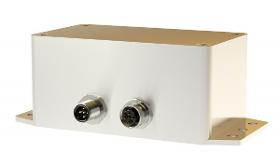
TWK-ELEKTRONIK GMBH
Germany
The sensor system is intended as a component for use e.g. in wind power plants to measure and evaluate vibrations in the mast head. Registration of dynamic accelerations by means of MEMS sensors (Micro-Electro-Mechanical System) with subsequent digitisation by a controller. The device consists of an acceleration sensor, a controller unit and three types of output interface. The main feature is two safety switching contacts (potential-free), which can be used e.g. in the safety chain to undertake safety shut-off in the event of excessively high acceleration values. Data output is carried out via the CANopen interface. The standard or the safety profile can be selected. There are additionally two analogue outputs 4 ... 20 mA, which can be optionally assigned to two of the three measurement axes. Thanks to its high resistance to vibration and shock, the sensor is suitable for use in areas with rough environmental conditions.
Request for a quote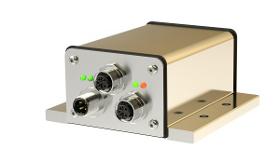
TWK-ELEKTRONIK GMBH
Germany
The sensor system is intended as a component for use e.g. in wind power plants to measure and evaluate vibrations in the mast head. Registration of dynamic accelerations by means of MEMS sensors (Micro-Electro-Mechanical System) with subsequent digitisation by a controller.The device consists of an acceleration sensor, a controller unit and the output interface PROFIsafe over PROFINET for output of the acceleration values. Thanks to its high resistance to vibration and shock - more than the defined measuring range -, the sensor is suitable for use in areas with rough environmental conditions.Electrical connection is carried out using three connectors.
Request for a quote
TWK-ELEKTRONIK GMBH
Germany
The sensor system is intended as a component for use e.g. in wind power plants to measure and evaluate vibrations in the mast head. Registration of dynamic accelerations by means of MEMS sensors (Micro-Electro-Mechanical System) with subsequent digitisation by a controller. The device consists of an acceleration sensors, a controller unit and three types of output interface. Data output is carried out via two analogue interfaces with 4 ... 20 mA plus CANopen and via 4 relay contacts (currently 1 error relay contact). The NVA is parameterised via the CANopen interface. This is not galvanically separated. The sensor is equipped with a filter circuit to protect against fast transients and surge voltages of up to 2 kV in the supply. The protection types are IP 69K (housing) and IP 67 (connector/socket). With its good vibration and shock values, the sensor is suitable for use in areas with rough environmental conditions.
Request for a quote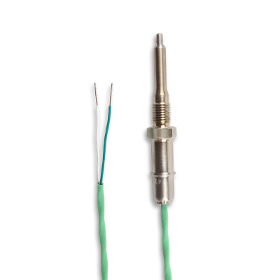
THERMA THERMOFÜHLER GMBH
Germany
This sensor for measuring exhaust gases was developed together with a Formula 1 team. The goal was to achieve the greatest possible reliability during the race. The sensor was designed so that it can withstand a maximum of vibrations and extreme temperatures while being made in a highly compact construction at the same time. The special feature is the connection lead. It is not made from the usual mineral-insulated stainless steel sheathed line, which is too rigid and which tends to vibration fractures. Instead, the line is made of stranded conductors with PTFE insulation and an additional heat shield so it can be easily and flexibly adapted to the environment. The sensor is being used with exceeding success by professional teams in long distance races, American race series and the domestic DTM. The benefits: Highly vibration-proof Very robust High temperature resistance (up to 1,200 °C) Individual plug assembly possible Can be individually adapted
Request for a quote
THERMA THERMOFÜHLER GMBH
Germany
This plug-in sheathing thermocouple is recommended for measuring the temperature in the exhaust gas flow. It is genuinely multipurpose, mounting with the cap nut means the thermocouple does not need to be rotated, which simplifies installation and fast replacement. In addition, it has “motor sports genes” such as vibration resistance, fast response time and high temperature resistance. The benefits: Vibration-proof Fast response time High temperature resistance (up to 1,200 °C) Various installation lengths can be supplied With cap nut Sheathed thermocouple NiCr-Ni, Type “K”, Class 1
Request for a quote
PCB PIEZOTRONICS GMBH
Germany
Current loop powered vibration transmitters enable cost-effective and permanent monitoring of machine vibrations. They provide a standardised 4 ... 20 mA output signal, which is proportional to the RMS or peak value of the measured vibration amplitude. The transmitters are connected to existing, free inputs of a PLC or a process control system. These then issue a warning message when a preset vibration level is exceeded or switch off the machine in an emergency. — Measuring range 0 ... 25.4 mm/s — Output range 4 ... 20 mA — Frequency range 3 ... 1,000 Hz — 2-pin connection socket on top. For an individual offer, please contact us directly.
Request for a quote
PCB PIEZOTRONICS GMBH
Germany
The Model 682C05 signal transmitter is used on the one hand to supply ICP(R)/IEPE vibration sensors and essentially to provide early warning of developing faults in rolling bearings, such as damage to the inner or outer ring, play and lack of lubrication. The unit provides two output signals, the vibration level and information about high-frequency peaks or shocks. The module also has a raw signal output for connecting machine condition analysers. For an individual offer, please contact us directly.
Request for a quote
PCB PIEZOTRONICS GMBH
Germany
The Model 682C03 signal converter can be used to supply constant current-fed ICP®/IEPE accelerometers and connect them to 4 ... 20 mA signal circuits. The signal converter supplies an output current proportional to the RMS or peak value of the vibration acceleration, the vibration velocity or the vibration displacement (adjustable). For an individual offer, please contact us directly.
Request for a quote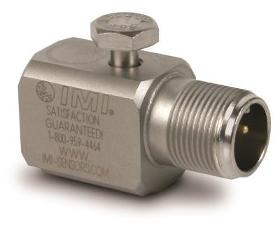
PCB PIEZOTRONICS GMBH
Germany
Acceleration sensors with ICP®/IEPE technology are usually used for vibration monitoring. Sensors for series use are particularly suitable if a large number of measuring points are to be monitored. The low-cost sensor models, where the sensor model 627A01 belongs, can be integrated permanently into monitoring systems or used in conjunction with a portable data collector/analyzer for route-based monitoring. The accelerometer presented here, model 602D01, can be used in ambient temperatures up to 121 °C. If the operating conditions require it, this model is also available with EX approval or with SIL-2 declaration. All sensors are supplied with a 1-point calibration according to ISO 17025. — With through hole — Measuring range 50 g — Sensitivity 100 mV/g — Frequency range 0.5 ... 8,000 Hz — Single-point calibration at 100 Hz — 2-pin connection socket on the side Please contact us directly for an individual offer.
Request for a quote
PCB PIEZOTRONICS GMBH
Germany
The low-cost High Temperature ICP®/ IEPE accelerometer, model HT602D01, is ideal for vibration measurements in higher temperature applications, including the paper, plastics and steel industries. These high temperature ceramic shear ICP® accelerometers feature a 2-pin MIL-C-5015 side-exit connector in a low-profile package. They can be used in environments with temperatures up to +325°F/+163°C. The sensing element of these accelerometers provides a sensitivity of (±10%) 100 mV/g (10.2 mV/(m/s²)) with a frequency range of (±3dB) 30 to 480000 cpm (0.5 to 8000 Hz). — Industrial ICP® vibration sensor — Continuous operating temperature up to 163 °C — With through hole — Measuring range 50 g — Sensitivity 100 mV/g — Frequency range 0.8 ... 8,000 Hz — Single-point calibration at 100 Hz — 2-pin connection socket on the side Please contact us directly for an individual offer.
Request for a quote
PCB PIEZOTRONICS GMBH
Germany
Usually, acceleration sensors with ICP®/IEPE technology are used for vibration monitoring. Sensors for series use are particularly suitable if a large number of measuring points are to be monitored. The low-cost sensor models, where the sensor model 627A01 belongs, can be integrated permanently into monitoring systems or used in conjunction with a portable data collector/analyzer for route-based monitoring. The accelerometer presented here, model 627A01, can be used in ambient temperatures up to 121 °C. If the operating conditions require it, this model is also available with EX approval or with SIL-2 declaration. All sensors are supplied with 1-point calibration according to ISO 17025. The industrial accelerometer, model 627A01, is equipped with a quartz sensing element. — Measuring range 50 g — Sensitivity 100 mV/g — Frequency range 0.33 ... 10,000 Hz — Single-point calibration at 100 Hz — 2-pin connection socket on top For an individual offer, please contact us directly
Request for a quote
PCB PIEZOTRONICS GMBH
Germany
Cost-effective industrial ICP®/ IEPE accelerometers are ideal for fixed installations and use in continuous on-line monitoring systems. This improves safety when installed in hazardous or inaccessible locations. Connection can be made via switches or junction boxes for route-based data acquisition systems. The Model 601A01 is suitable as a low-cost industrial ICP®/ IEPE accelerometer for a general purpose. It has a very good signal-to-noise ratio and a ceramic sensing element. The low-cost ICP®/ IEPE accelerometers have an economical design and are ideal for fixed mounting. Their rugged stainless steel housing with hermetic sealing and housing-isolated electronics, eliminate noise problems. — Industrial ICP® vibration sensor — Measuring range 50 g — Sensitivity 100 mV/g — Frequency range 0.27 ... 10,000 Hz — Single-point calibration at 100 Hz — 2-pin connection socket on top For an individual offer, please contact us directly.
Request for a quote
PCB PIEZOTRONICS GMBH
Germany
The low cost industrial ICP® / IEPE vibration sensor, model 601A02, is suitable for slow speed applications such as slow moving roller element bearings in a paper mill. Increasing the sensitivity of the sensor to 500 mV/g can improve the signal resolution in these applications. Despite their economical name, low-cost accelerometers are ideal for applications where the sensors are permanently mounted to collect vibration data 24/7, monthly or even quarterly. Low-cost accelerometers are all hermetically sealed in stainless steel housings and most are covered by IMI Sensors' Lifetime Warranty Plus programme. — Industrial ICP® vibration sensor — Measuring range 10 g — Sensitivity 500 mV/g — Frequency range 0.17 ... 10,000 Hz — Single point calibration at 100 Hz — 2-pin connection socket on top For an individual offer, please contact us directly.
Request for a quote
PCB PIEZOTRONICS GMBH
Germany
The 603C01 ICP® is one model in a very diverse line of 603-Series accelerometers. The 603-Series includes alternative sensitivity models, hazardous area approved models, dual output models and models with an integral cable. For monitoring systems with many input channels, robustness, reliability and a favourable sensor price are of great importance. Low-cost sensors with ICP®/IEPE technology are used when a large number of measuring points are to be continuously monitored and an evaluation of the vibration spectrum is required. is required. — Industrial ICP®/IEPE vibration sensor — Measuring range 50 g — Sensitivity 100 mV/g — Frequency range 0.5 ... 10,000 Hz — Single-point calibration at 100 Hz — 2-pin connection socket on top — With metric (M) or inch mounting bolt If you have any further questions about this sensor model, please do not hesitate to contact us. We will be pleased to help you.
Request for a quote
IPF ELECTRONIC GMBH
Germany
Inductive proximity switches are contact-free sensors. They detect all conductive metals, regardless of whether they move or not. The achievable sensing range of the devices depends on the object material and its dimensions. The vibration-resistant sensors can be approached laterally or frontally. Inductive proximity switches are used for presence detection (e.g. goods carriers), positioning (e.g. dampers), counting (e.g. nuts /bolts), speed detection (e.g. for cog wheels), on conveyor systems (e.g. hose feedings) or distance measurements (e.g. press-in checking) of metallic objects.
Request for a quote
IPF ELECTRONIC GMBH
Germany
Capacitive proximity switches are contact-free sensors. They detect metallic and non-metallic objects, regardless of whether they move or not. The achievable sensing range of the devices depends on the object material, its dimensions and the response sensitivity, which is set via a potentiometer. The vibration-resistant sensors can be approached laterally or frontally. Capacitive proximity switches are used for presence detection (e.g. sealing detection), positioning (e.g. PET bottles), counting (e.g. plastic caps), level detection (e.g. lubricant) or distance measurements (e.g. thickness measurement) of solid and liquid materials.
Request for a quote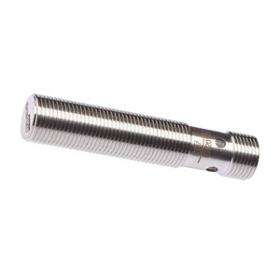
IPF ELECTRONIC GMBH
Germany
Inductive proximity switches are contact-free sensors. They detect all conductive metals, regardless of whether they move or not. The achievable sensing range of the devices depends on the object material and its dimensions. The vibration-resistant sensors can be approached laterally or frontally. Inductive proximity switches are used for presence detection (e.g. goods carriers), positioning (e.g. dampers), counting (e.g. nuts /bolts), speed detection (e.g. for cog wheels), on conveyor systems (e.g. hose feedings) or distance measurements (e.g. press-in checking) of metallic objects.
Request for a quoteDo you sell or make similar products?
Sign up to europages and have your products listed
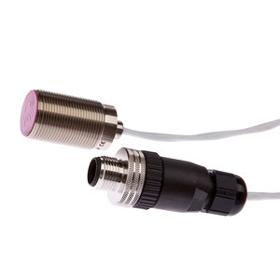
IPF ELECTRONIC GMBH
Germany
Inductive proximity switches are contact-free sensors. They detect all conductive metals, regardless of whether they move or not. The achievable sensing range of the devices depends on the object material and its dimensions. The vibration-resistant sensors can be approached laterally or frontally. Inductive proximity switches are used for presence detection (e.g. goods carriers), positioning (e.g. dampers), counting (e.g. nuts /bolts), speed detection (e.g. for cog wheels), on conveyor systems (e.g. hose feedings) or distance measurements (e.g. press-in checking) of metallic objects.
Request for a quoteResults for
Vibration sensors - Import exportNumber of results
19 ProductsCompany type